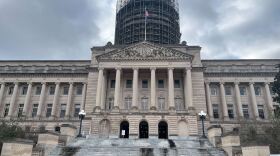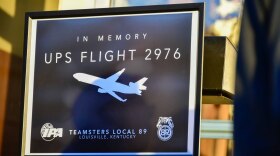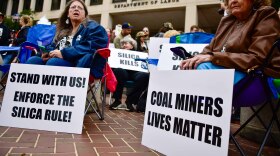Ahead of his lecture at the Kentucky Center, he spoke with LPM’s Bill Burton about his book and the beginnings of the Cold War.
This transcript has been edited for brevity and clarity.
Bill Burton: The era in this country after World War II is often defined by that word, "McCarthyism." But it wasn't simply Sen. Joe McCarthy acting alone. It went much deeper, didn't it?
Clay Risen: Yeah, it did. And in fact, he only came in halfway into the story, as it were. My book really starts in 1946, which is four years before McCarthy came onto the scene.
BB: Your book begins with President Harry Truman and what he did to start the Cold War?
CR: Harry Truman was worried about both the risk of Soviet espionage and subversion here in the United States. He was worried about what the Cold War was going to become. He was also worried about what it meant for him politically. He didn't want to look soft on communism, and so he created loyalty tests for everyone in the government. He also came up with a list of organizations that if you had an affiliation with one of them, you would be investigated, you might be fired. And that list became commonly used, not just in government, but in all sorts of private industries. It helped really be the blueprint for the Red Scare.

BB: You also wrote about how many of those directly affected by the Red Scare are not always easy to see as heroes of the story. How so?
CR: I think one of the things that people need to keep in mind with the Red Scare is that there was a there there. Soviet espionage was a real thing. By the late 1940s, it more or less tapered off, but there was a reason to be worried. The Communist Party in the United States was not a good actor. By and large, the organization played whatever tune Stalin wanted. It was happy to play along with espionage efforts. That's not to indict everybody who admired the party but certainly the organization. So there was a reason to start to examine the limits of what we might allow in this country. The point in the book is really that that conversation was hijacked by people like McCarthy, who used it to their own ends.
BB: McCarthy did start the House Un-American Activities Committee in the ’50s. That continued under a different name, House Committee on Internal Security, until 1975. How did it last that long?
CR: Eventually it really kind of ran out of steam. But one of the things I think is important, and one of the reasons why the book's subtitle talks about the making of modern America, is that even with the end of the Red Scare in the late 1950s, the residue remained. Both in terms of that committee, but also just the lines that were drawn. What beliefs were acceptable? What sort of political positions were acceptable? What were the limits on free speech in America? What was the Democratic Party or the Republican Party going to do about extremism in their ranks? These debates, which continue today in different forms, very much grew out of that period in the first decade after World War II.
BB: That's author clay risen, whose latest book is titled “Red Scare: Blacklists, McCarthyism, and the Making of Modern America.” Clay, thanks so much for your time.
CR: Thank you so much.
Note: The Filson provides support to Louisville Public Media.






